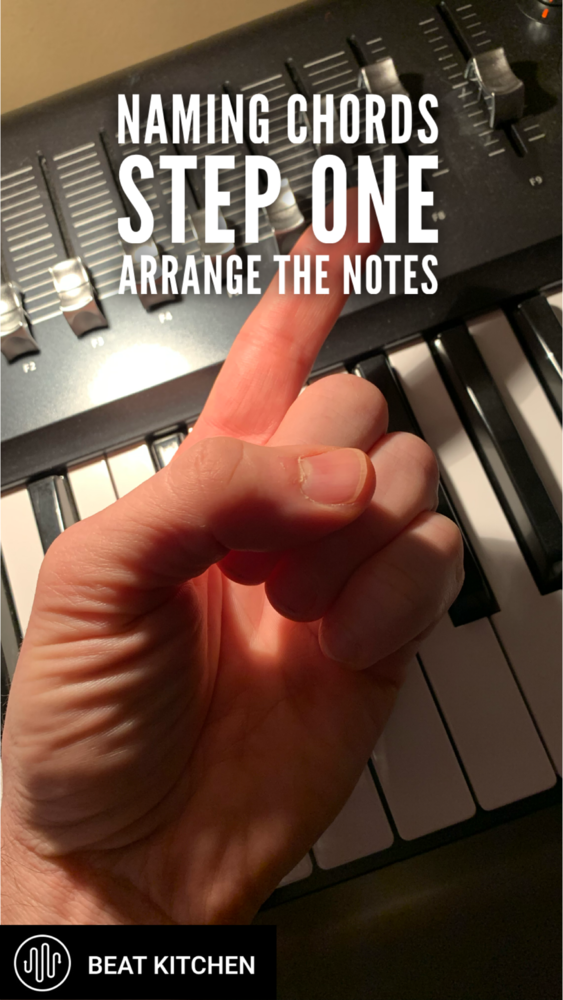Three steps to identifying a chord. This is the first one. We have to put the notes in order.
So first of all, we’re sticking in the key of C. We can describe all the major chord types there, but this will work in all keys. It’s just going to be easier to visualize it here.
Now, if you’re lucky enough that they’re already stacked in evenly spaced thirds, your job is done. But more often than not, you’re probably looking at a cluster or a group of notes that are spread out like this. The structure we’re looking for is called the root position.
And to get there, we’re just going to play leapfrog. We’re going to take each note on the bottom and bring it up an octave until we see the structure of the chord come into shape built in thirds. This is the same chord.
Now, and only now, can we start to identify this chord. And that comes next.

